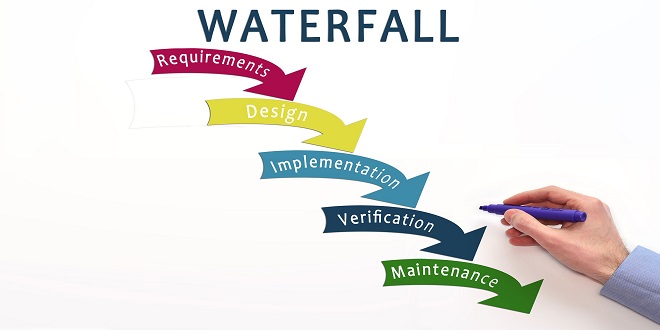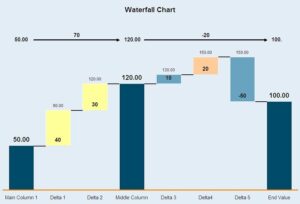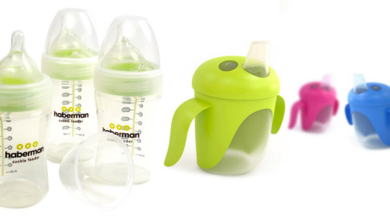Pros and Cons of Waterfall Charts

There are many different types of charts and graphs that can be used to display data, and each has its own advantages and disadvantages. Waterfall charts are a type of graph that is often used to show the cumulative effect of a series of positive and negative values. While waterfall charts can be helpful in some situations, there are also some potential drawbacks that you should be aware of before using them. Keep reading to learn more about waterfall charts and whether they might be right for your data.

What are waterfall charts?
A waterfall chart is a graphical representation of data that helps to illustrate how different parts of a whole contribute to the whole. The chart begins at the bottom with the total value and then displays how each value contributes to the total. This type of chart is helpful for understanding how a change in one part of a system impacts the rest of the system.
Waterfall charts can be helpful for tracking progress on a project, measuring the impact of individual tasks on the overall goal, and identifying potential bottlenecks. They can also be used to compare actual results against budget or forecasted values. In financial reporting, waterfall charts can be used to show how revenue or profit is affected by positive and negative changes in components such as sales, costs of goods sold, and operating expenses.
What are the pros of waterfall charts?

Waterfall charts are a data visualization tool used to compare and contrast different data sets. They can be helpful in spotting trends or abnormalities in the data. The waterfall chart is especially useful for displaying changes over time. Waterfall charts are also a great way to visualize how your data flows from one stage to another. They can help you understand your data better and make it easier to identify any abnormalities.
Waterfall charts are also great for tracking progress over time. They can be used to visualize how different parts of a project are related to each other and how the total project progresses over time. This makes them ideal for tracking things like budget, schedule, and resources.
Additionally, waterfall charts are beneficial for displaying financial data because they allow you to see how different parts of your business are performing. This type of chart is especially helpful for highlighting positive and negative trends and for identifying areas where you may need to make changes.Visit also myidtravel.
You might also find it helpful to use waterfall charts to compare data sets and track cumulative changes. They can be helpful in spotting trends and patterns in your data. The chart starts with the first value on the left and adds each successive value to the total. A line is drawn from the starting point to the last value, representing the cumulative total. This type of chart can be useful when you want to see how a series of positive or negative values affect the overall result. Finally, waterfall charts are ideal for presentations and reports because they provide a clear overview of how a particular process works.
What are the cons of waterfall charts?
Waterfall charts are often used to track the progress of a project over time. They can be helpful for data analysis to help understand how different tasks or phases contribute to the overall goal. However, there are several drawbacks to using waterfall charts. Depending on the data and the amount of information used, they can be difficult to read and understand sometimes. Additionally, it’s possible that a waterfall chart can be misleading if there are negative values or if the values are not in order from largest to smallest. Additionally, while they are a very beneficial tool, they can be time-consuming to create occasionally.
Waterfall charts are important because they provide a visual representation of how data flows through a system. This can help identify where problems may occur and how to fix them. Overall, waterfall charts are an important tool for data analysis.




